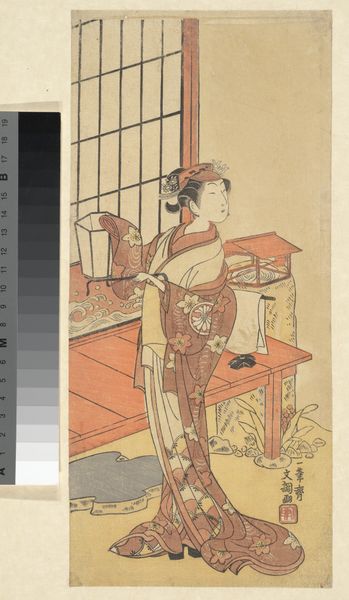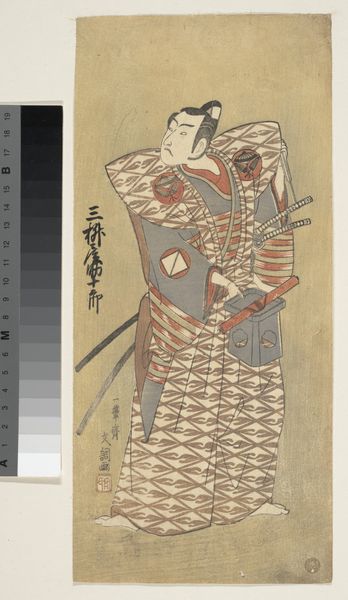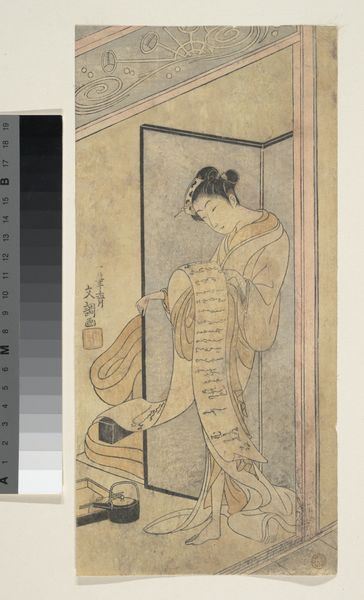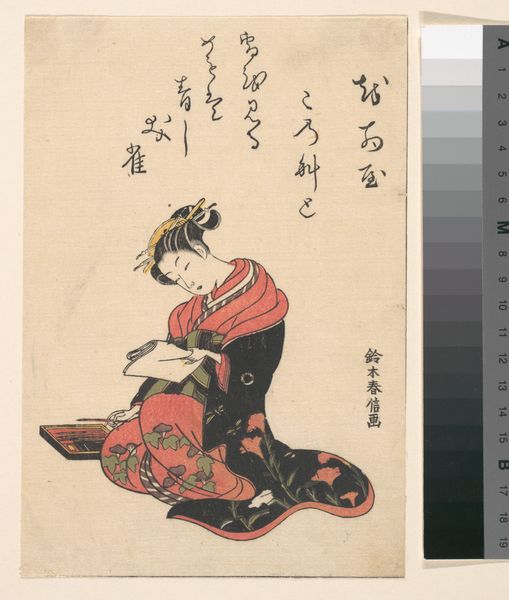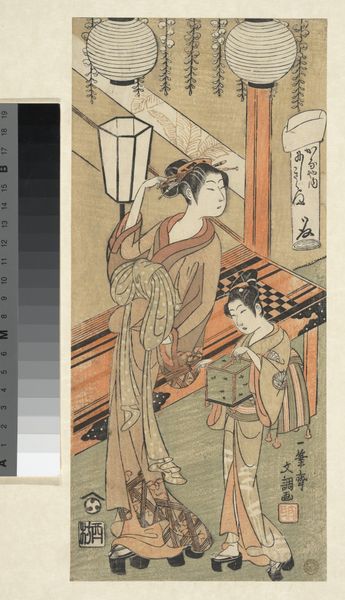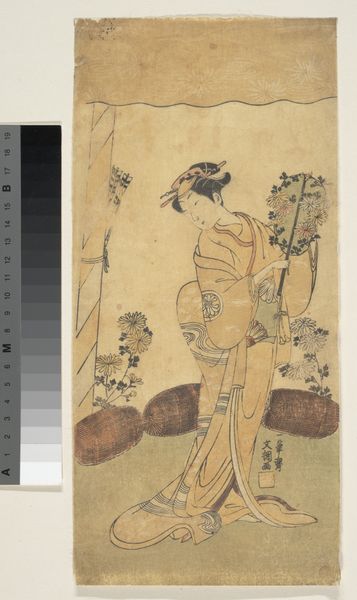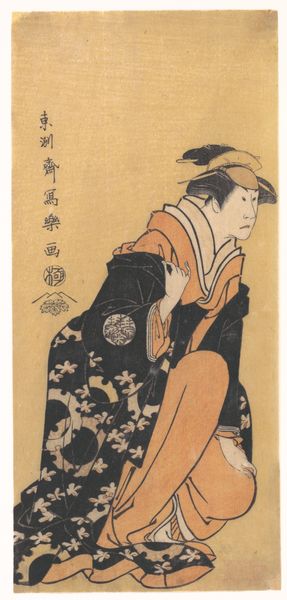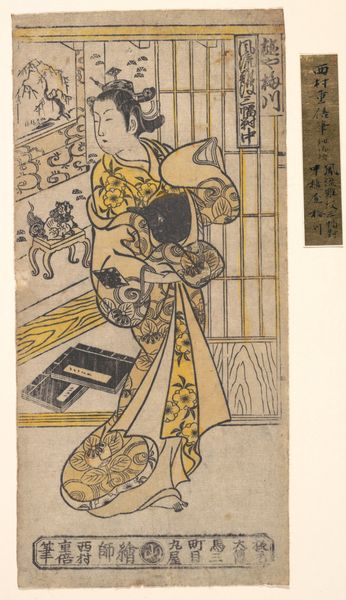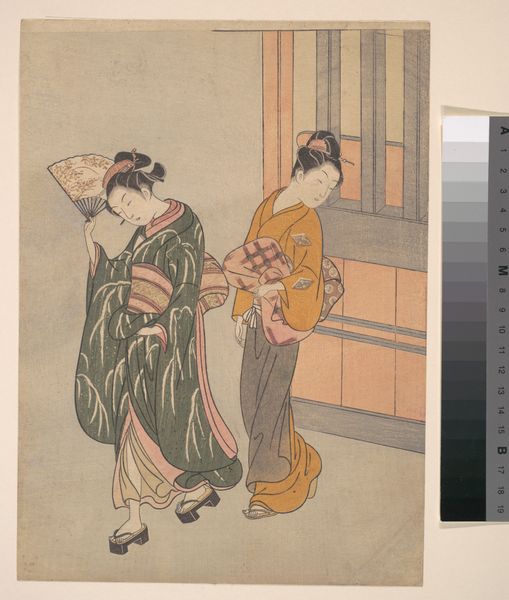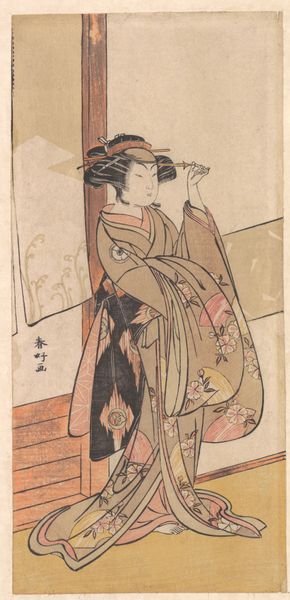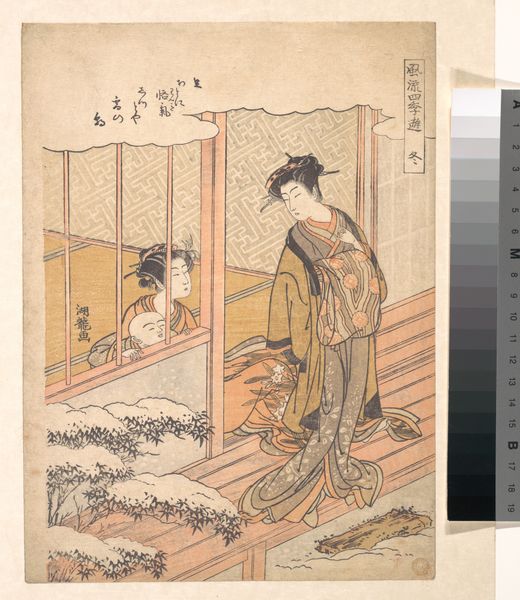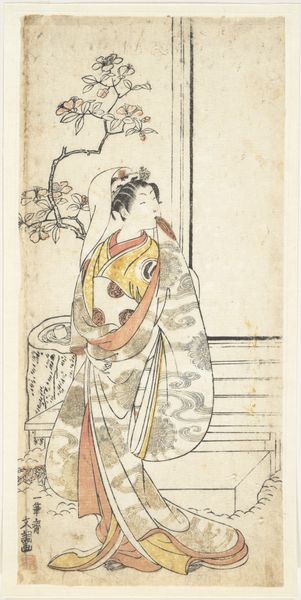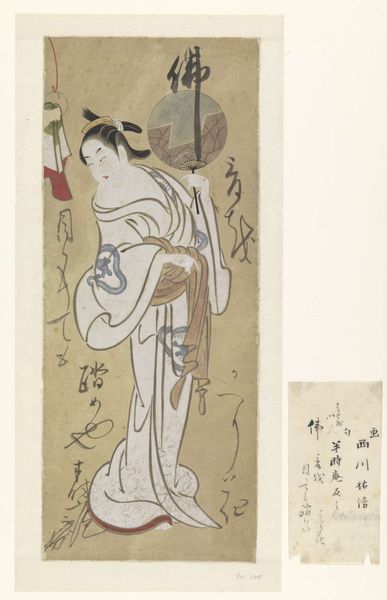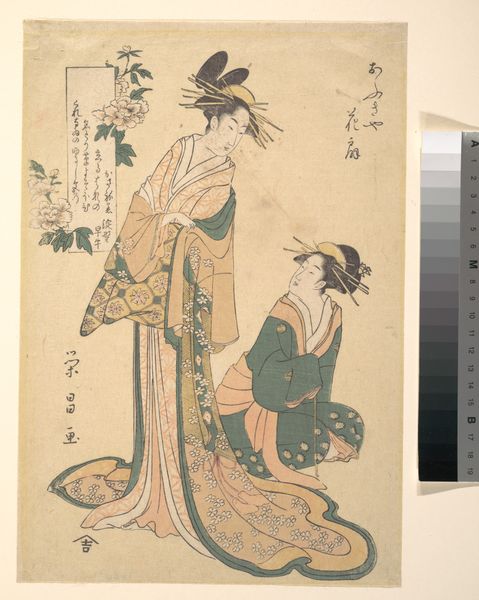
A Waitress of the Sakai-ya Teahouse Standing and Looking 1760 - 1780
0:00
0:00
# print
#
asian-art
#
ukiyo-e
#
figuration
#
genre-painting
Dimensions: 12 1/32 x 5 5/8 in. (30.6 x 14.3 cm)
Copyright: Public Domain
This woodblock print of a teahouse waitress was made by Ippitsusai Bunchō in Japan in the late 1700s. It offers a glimpse into the social dynamics of the Edo period. The woman in the print doesn't just serve tea; she represents a whole network of pleasure and commerce. Sakai-ya Teahouse wasn't just a place for refreshment, it was a social hub. Woodblock prints like these played a crucial role in popularizing and advertising these establishments. By capturing the beauty and allure of the waitresses, artists fueled the demand for their services. We see a society that, despite its rigid class structures, allowed for a certain degree of social mobility and cultural expression through these entertainment districts. The print itself, as a mass-produced item, democratized access to art and information, challenging traditional hierarchies. To truly understand this image, we can examine the historical records of the pleasure districts, consult maps and guidebooks of the period, and delve into the biographies of the artists and the cultural figures they depicted. These efforts reveal the dynamic interplay of art, commerce, and social life in Edo Japan.
Comments
No comments
Be the first to comment and join the conversation on the ultimate creative platform.
